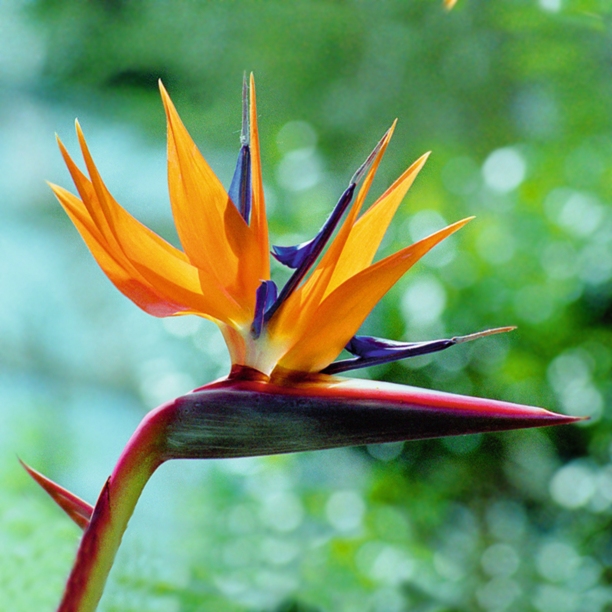Bird-of-paradise
Strelitzia reginae
Bird of paradise flower family (Strelitziaceae)
A fitting name
A plant with large, showy flowers: orange and blue with the shape of a bird’s head and beak. The flower is strong enough to bear the weight of the birds that perch on it to drink the nectar and thereby pollinate the flower. This species is native to South Africa and here it is called suikerbekkies or ‘sugar beak’.
In 1773 the plant was introduced into Europe. Its scientific name was given in honour of the British Queen Charlotte von Mecklenburg-Strelitz, who was interested in botany and actively supported the expansion of Kew Gardens in London.
The plant requires little attention when grown in gardens. It grows slowly and will flower after several years if propagated from seed. The flower is the symbol of the Botanical Garden of the Technical University of Delft.
Themes
Crown jewel in the Botanical Garden TU Delft.
Bird-of-paradise is highly-prized for its flower and widely cultivated as an ornamental. The flowers are ideal for cut flowers and make an exotic addition to floral displays.
The hard, beak-like involucral sheath from which the flower emerges is termed the spathe. It makes a durable perch for birds that pollinate the flowers. Two of the blue petals are joined together to form an arrow-like nectary. When a sunbird sits to drink the nectar, the petals open to cover their feet in pollen.
Details
| Description: | Herb, up to 1.2 m; strelitzia reginae plants consist of clumps of greyish-green leaves, with long petioles and broad oval blades, arising from an underground stem (rhizome). |
|---|---|
| Distributions: | Native to the southern and eastern parts of the cape province and northern natal in south africa. |
| Habitat: | River banks and scrub clearings in coastal areas. |
| Year cycle: | Perennial (polycarpic evergreen) |
| Hardiness: | 34 - 41 f (tender - cool or frost-free glasshouse) |
| Flowering period: | Juli - augustus |
| Flower color: | Orange, purple, blue |
| Notes on flowers: | The flowers, which emerge one at a time from the spathe, consist of three brilliant orange sepals and three purplish-blue petals. |
| Notes on fruits: | The fruit is a leathery capsule containing numerous black seeds, each with an orange aril (an outgrowth from the seed). |
